The world's toughest highway?
The Inuvik-Tuktoyaktuk highway which is 137 km away in Canada is a new vital path along a very simple tundra, but also a window on the almost forgotten native life path.
A million horns are installed in the northern sky. Or so it seems from a lucrative point of the snowmobile that is spinning as it slides over the tundra basin. About 3,000 wild deer have gathered together on the horizon, their branched horns fused seamlessly with endless skeletal skeletons and black pine trees. We are 60 km south of the Arctic Ocean in the remote northern region of Canada's Northwest Territory, and go to Mother Nature. The scene has not been affected by humans for thousands of years.
Two dense foxes ran across the permafrost, scattering the sheep through the lichen shoreline to the frozen lake ahead. The North Pole's winter silence was broken, the flock became a covered bustle and hooves of horses.
That sounds tundra
"Look," said the Inuvialuit (Canadian Canadian Inuit) guiding Noel Cockney gently, as he stopped his Ski-Doo and beckoned across the ice. It was -25C and his voice almost broke through the thick mask of his face mask. "When the deer ran, it sounded like rain in the snow. That's the tundra sound. "
Hidden away at the top of the unexplored Arctic periphery, Canada's largest herd of deer has long lived in solitude. Every spring, vivacious animals migrate westward to the birthplace of their child near Richards Island to raise their children, but these days they have more to deal with than clever foxes and wolves.
They now have to deal with the coming of man.
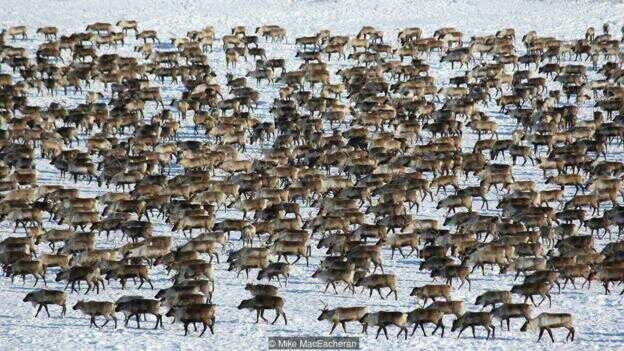
The farthest north of the Northwest Territories area is home to Canada's largest herd of deer
For the last two millennia, the only person capable of understanding and adapting to this land is the Inuvialuit, the northern guard who lives in a settlement opposite the Mackenzie Delta, where Canada's longest river system empties into the Arctic Ocean. With approximately 5,700, the Inuvialuit has maintained a traditional lifestyle as in America. In line with the seasons, they are tied to the ground, trapping Pole rabbits, foxes and lynx for flesh and feathers in the winter; in summer they harvest the beluga whales during an approved hunt along the Tuktoyaktuk coast to provide the food they need for long winter passes.
The opening of Inuvik-Tuktoyaktuk Highway in November 2017 has changed everything for this frozen wilderness. Built at a cost of $ 300 million and nicknamed Arctic Ice Road, a 137-km gravel road, is the first all-weather road to Canada's Arctic Coast, splitting the isolated tundra truck into two.
The highway can also be described as the most difficult in the world. Takes four years to build - three to create a layer of gravel thick enough to withstand harsh winters, and one to repair the surface - it has been designed to tolerate temperatures that can tip under -40C and press 20C on summer evenings when the sun never set.
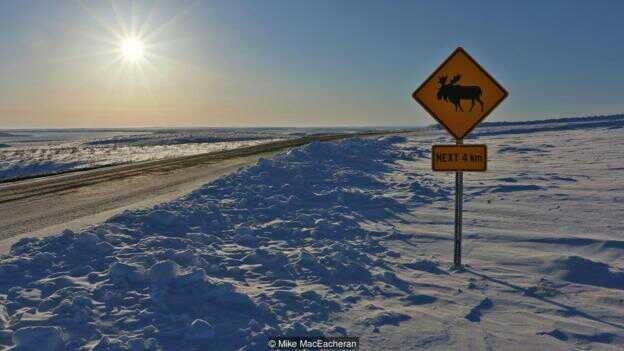
The opening of Inuvik-Tuktoyaktuk Highway has changed everything for this frozen wilderness
Yet even though this is the lifeline for the remote indigenous community of Inuvialuit of Tuktoyaktuk (population: 850), the last Arctic village on the edge of the frozen wilderness of mainland Canada, this road proved to be divisive. Created as a way for oil and gas exploration by former prime minister Stephen Harper's government, some see it as a pathway to resources (despite a temporary moratorium on offshore licenses from the government of Justin Trudeau). Others call it a vanity project, bringing this fragile community a step closer to cultural erosion.
But for his passionate supporters, including Tuktoyaktuk, a local Noel Cockney who spent two years working on the road, the highway marks a rebirth for this ultra-distant community. Opening the first year's path to visitors for the first time, this is an opportunity for progress and possibilities. In summer, drivers can now reach inaccessible lakes and rivers, many of which have never been explored. In winter, there is a visceral passion watching a herd of deer and driving to an unknown Tuktoyaktuk, whose name means 'look like a caribou' in the local language. And for the locals, this new route is a potential honeypot to attract investment and jobs.
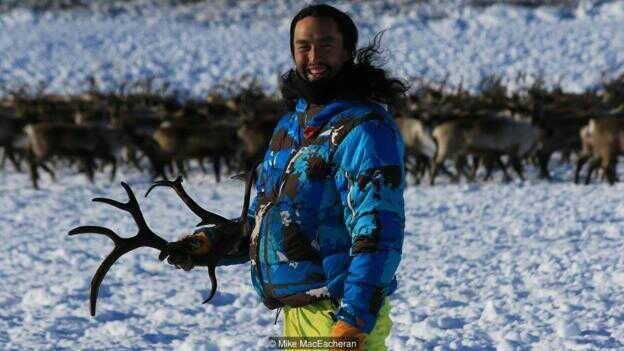
Local Noel Cockney spent two years working on the road
Before Inuvik-Tuktoyaktuk Highway, the community's winter connection to the outside world is an imperfect and short ice track that melts every spring.
"Getting to 'Tuk' used to be very difficult," said Cockney, parked a snowmobile in a corner of view overlooking a new highway. "In winter, our roads disappear into thin air, and in summer it is a choice of two: fly or boat ride along the river." Now, since the arrival of the road, local operator Aklak Air has stopped its daily service.
The value of keeping this cultural tradition alive can not be underestimated
Another individual who embraces the road opportunity is Kylik Kisoun Taylor, the second generation Inuvialuit representing the next generation pioneers of the northerners. A member of the board of the Indigenous Tourism Association of Canada and owner of Tundra North Tours, an Inuit company based in the village of Inuvik at the south end of the road, Taylor grew up in southern Ontario but felt the northern call from then on back at the age of 16.
"Indigenous culture is a resource here and tourism has the power to use it," he said, wearing a seal fur, as we stepped out of Inuvik while driving a new road north. "Whether it's trapping a duck or killing caribou with a spear - the value of keeping this cultural tradition alive can not be underestimated. Indigenous communities forget how to use these arctic skills, but they can be compatible with tourism and the modern world. And I want to educate visitors about this. "
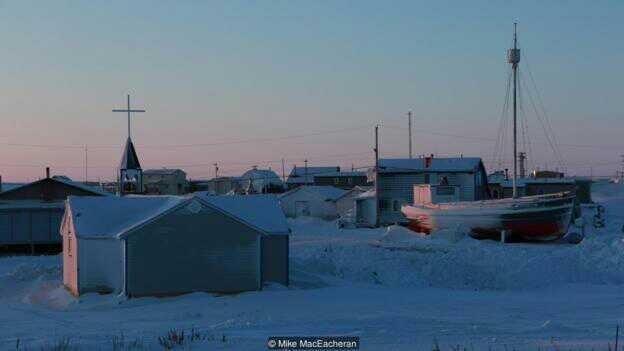
Inuvialuit indigenous community of Tuktoyaktuk is the last arctic village on the edge of Canada's frozen wilderness
For all of that highways share local opinions, to drive it is very riveting. Away from the straight highway, it's loops and bends, hugging the northern frozen pond, called Eskimo Lakes, the brackish river basin system. At the side of the road, the Richardson Mountains and boreal forests faded until completely disappeared, leaving the windshield crammed with a bald panorama of ice. And there is so much white, the sky takes a pale colored light.
"You have not seen the Arctic unless you came in winter," Taylor said as we passed a huge expanse of ice. Up close, wind-blown snow drove down the road, moving gravel like an illusion. "We are at the edge of the tree line here - this is the limit where it is convenient to live."
Passing through a series of pingos, the Earth-enclosed periglacial landscape that is Canada's national landmark, Tuktoyaktuk begins to make its presence felt. As if divorced from his own country, the village sits apart on a piece of land that jutted into the Arctic Sea. No maple or pine sugar, or any tree - just an endless ocean, cold gray waves froze and stopped.
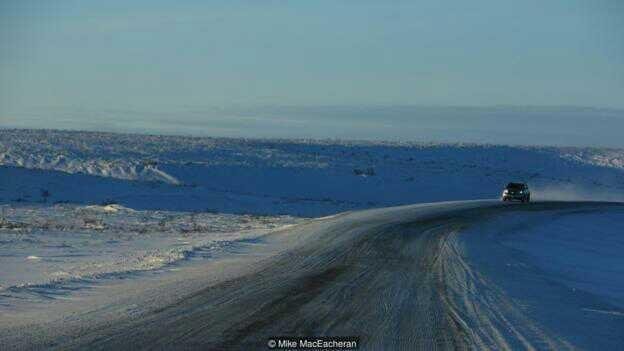
The Inuvik-Tuktoyaktuk Highway takes four years and costs CAD $ 300 million to build
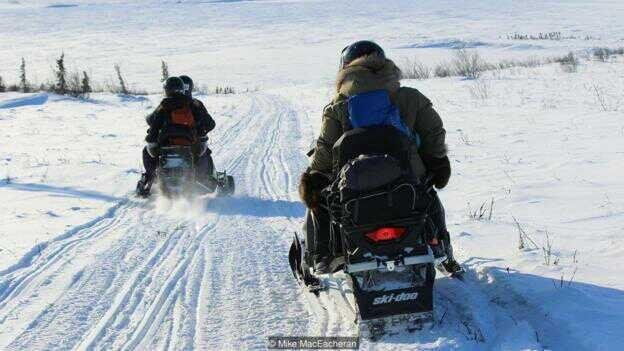
Before the highway, the Inuvialuit's winter connection to the outside world was a rudimentary ice track that melted each spring
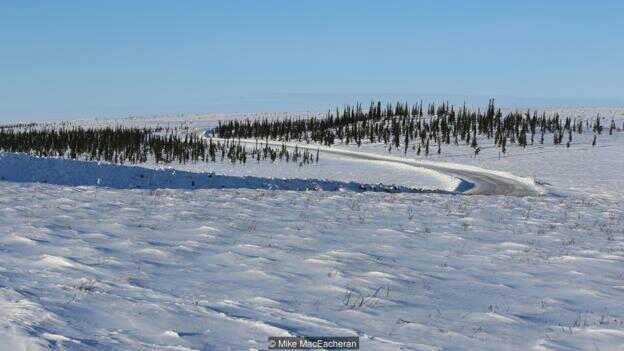
Highways open Tuktoyaktuk throughout the year to visitors, providing opportunities for progress and possibilities
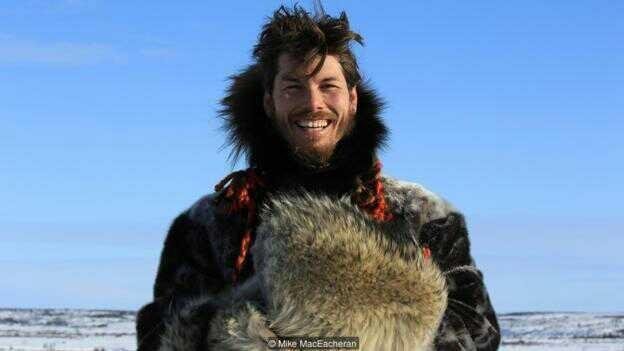
Kylik Kisoun Taylor: "Indigenous culture is a resource here and tourism has the power to exploit it"
Two and a half hours after leaving, we ended up parking near the dock buried in the ice. Tuktoyaktuk's streets are empty of cold air. The hoarse huts, where the dog sleigh team slept, were closed for the night. There was no one around except at Tuktu B & B, where I met the owner Maureen Pokiak, who discussed the impact of the road with me at dinner. Her husband, James, he apologized, was out hunting for a cow hunt overnight.
The road can make life easier for people in the long run, but we will stay connected to the land
"This community is in our blood, so I do not anticipate too much change," he said, while honing traditional knives to prepare traditional indigenous food - raw beluga whales, or muktuk. "There are hardcore elements that love this extreme environment, and they live and breathe tradition. That path may make life easier for the people in the long run, but we will stay connected to the land - that's how it always will be. "
Only when our truck returned south to Inuvik in the dark, the streetlights spreading light in the snow, did I begin to understand what it meant. As the road crosses a series of humpbacks, the Arctic sun rises to reveal the beauty of the ever-changing tundra, the epic drama of a landscape illuminated with brilliant brilliant silver in white. As the light before dawn dawned, the herd of deer kept moving, the sound of 'rain' in the snow signaled that life in the tundra would continue. Just like always do.